|
Rookie bird photographer Bill Wingfield at work on the Barnegat Jetty. Image created on the December Barnegat Jetty IPT with the tripod-mounted Canon EF 800mm f/5.6L IS USM Autofocus lens, the Canon 1.4x EF Extender III (teleconverter), and the Canon EOS-1D X digital SLR . ISO 400. Evaluative metering +1/3 stop: 1/500 sec. at f/9 in Manual mode. Notice that Bill has gotten nice and low in the rocks to reduce the angle of declination to the subject. Stabilizing the lens with his left hand from above is fine (though I prefer to do the same with my hand below the lens). The light is behind him and his shadow was pointed at the subject. Assuming that he was going to be there for a while I would make one suggestion for improvement. Anyone know what Bill was doing wrong? Central sensor (by necessity)/AI Servo Expand/Rear Focus AF and recompose. Click here if you missed the Rear Focus Tutorial. Click on the image to see a larger version. |
The Rookie
For the longest time, Dr. Bill Wingfield of Charleston, SC was the lone registrant on the December Barnegat Jetty IPT. It has forever been my policy to run a trip with only one (unless we specify a minimum for an international trip in advance). David Policansky of Washington DC joined us at the last moment.
Bill Wingfield is the happiest of happy campers. He was thrilled with the IPT, thrilled with the birds and the jetty, and thrilled with the personalized help that he received from Denise and me. He rented an 800mm f/5.6L IS lens for the trip and used it exclusively with the full frame EOS-5D Mark III. In April, after the promised firmware is released, this combo will focus with the 1.4X teleconverter at f/8. He was so thrilled with the 800 that he decided on the spot to purchase the 600 f/4L IS III (see here for why) that he asked his daughter if he could sell one of his grandchildren. When she said, No,” he went ahead and ordered the lens anyway using the BAA B&H affiliate link. Thanks Bill!
|
This and all of the images below were created by rookie bird photographer Bill Wingfield on the December Barnegat Jetty IPT with the tripod-mounted Canon EF 800mm f/5.6L IS lens and the Canon EOS 5D Mark III Digital Camera (Body Only) w/FREE Bonus Item – $52.02 Value! [expires soon]!. ISO 640 Evaluative Metering +2/3 stop: 1/1000 sec. at f/5.6. In the relatively low light here, Bill’s exposure settings were right-on. Shutter button AF. Razorbill: courtesy of and copyright 2012: Bill Wingfield. |
Razorbill
Bill really killed me on this one. He was seated just to my right and I did not see the two Razorbills that swam left to right right in front of him. By the time they got to me, they dove. I started to get up to follow them when this bird swam right by us. I got zip and my rookie student got the shot! I was quite proud of him and he nailed both the focus and the exposure.
|
This image was created with the tripod-mounted Canon EF 800mm f/5.6L IS lens and the Canon EOS 5D Mark III Digital Camera (Body Only) w/FREE Bonus Item – $52.02 Value! [expires soon]!. ISO 640 Evaluative Metering +1 stop: 1/400 sec. at f/5.6. Here, +1/3 stop would have been much better and ISO 800 would not have hurt for action. Shutter button AF. Northern Gannet with menhaden (mossbunker): courtesy of and copyright 2012: Bill Wingfield. |
Northern Gannet with menhaden (mossbunker)
Here, Bill should have been using a faster shutter speed here as some of the images in the series were soft due to motion blur. And he could have used a third or two of a stop less light. But we were able to save the WHITEs with the very sharp capture. As Bill is very serious about improving his skills, I am positive that in a short time he will be nailing the exposures every time.
|
This image was created with the tripod-mounted Canon EF 800mm f/5.6L IS lens and the Canon EOS 5D Mark III Digital Camera (Body Only) w/FREE Bonus Item – $52.02 Value! [expires soon]!. Purple Sandpiper, on bed of mussels (pun intended): courtesy of and copyright 2012: Bill Wingfield. ISO 800 Evaluative Metering at zero: 1/400 sec. at f/10. Here again, Bill’s exposure settings were right-on. F/10 at close range was a perfect choice. Shutter button AF. |
Purple Sandpiper, on bed of mussels (pun intended)
Here Bill created and designed a beautiful image with the shorebird nestled down comfortably on a bed of mussels. I am sure that this is a healthy crop but with the 5D Mark III’s superb 22 million pixels a sharp capture can hold up to a considerable crop.
|
This image of yours truly was created with the tripod-mounted Canon EF 800mm f/5.6L IS lens and the Canon EOS 5D Mark III Digital Camera (Body Only) w/FREE Bonus Item – $52.02 Value! [expires soon]!. ISO 800 Evaluative Metering +1 stop: 1/400 sec. at f/22. Here, ISO 400 and a much wider aperture would have been in order. Shutter button AF. Artie Morris emerging from surf during sand storm: courtesy of and copyright 2012: Bill Wingfield.. |
Mr. Famous Bird Photographer emerging from surf during sand storm
This was the first image that Bill sent me after then IPT and I loved it from the get-go as it really captured the harsh conditions that we faced for two days. I was actually out in the surf a bit too far as I got smacked waist-high by a few waves in an effort to get close to some Long-tailed Ducks that were swimming very close to shore.
BIRDS AS ART/A Creative Adventure Barnegat Jetty II IPT/Very Late Registration Discount Offer
BIRDS AS ART/Barnegat Jetty IPT II, Barnegat Light, NJ: 2 1/2 DAYS. JAN 18 (1:30pm), 19, and 20, 2012: $999. Limit 8/Openings: 3. Includes 5 photo-sessions, both lunches, introductory slide program, image review, sharing, editing, and Photoshop.
If you would like to join us tomorrow for this IPT or explore the possibility of joining the group for Saturday and/or Sunday, please try me on me cell at 1-863-221-2372 on Friday morning between 7am and 1pm. I will be glad to provide discount info.
Note: On cloudy days we grab a quick lunch and spend most of the day photographing. If you can’t make the whole thing, you can join what will likely be a small group as follows: Full Day with lunch: $400. Afternoon (1:30-dusk): $250. Call to arrange: 1-863-692-0906. Weekends OK. For more info, click here and scroll down.
Weekend Creative Nature Photography Seminar, Tampa, FL: February 23 & 24, 2013: $149 Limit: 50/Openings: 7
Join Denise Ippolito and me on the weekend of February 23-24 on the outskirts of Tampa, FL for a great weekend of fun and learning. Learn to improve your photography skills, your skill at designing images in the field, your creative vision, and your image optimization skills. Sunday critiquing session. Click here for additional details and the complete schedule.
Best to register soon as the seminar is filling up nicely.
Typos
On all blog posts, feel free to e-mail or leave a comment regarding any typos, wrong words, misspellings, omissions, or grammatical errors. Just be right. 🙂
Support the BAA Blog. Support the BAA Bulletins
We want and need to keep providing you with the latest free information, photography and Photoshop lessons, and all manner of related information. Show your appreciation by making your purchases immediately after clicking on any of our B&H or Amazon Affiliate links in this blog post. Remember, B&H ain’t just photography!


Shop Amazon
And from the BAA On-line Store:
LensCoats. I have a LensCoat on each of my big lenses to protect them from nicks and thus increase their re-sales value. All my big lens LensCoat stuff is in Hardwood Snow pattern.
LegCoat Tripod Leg Covers. I have four tripods active and each has a Hardwood Snow LegCoat on it to help prevent further damage to my tender shoulders 🙂 And you will love them in mega-cold weather….
Gizo GT3532 LS CF Tripod. This one replaces the GT3530LS Tripod and will last you a lifetime. Learn more about this great tripod here.
Mongoose M3.6 Tripod Head. Right now this is the best tripod head around for use with lenses that weigh less than 9 pounds. For heavier lenses, check out the Wimberley V2 head.
Double Bubble Level. You will find one in my camera’s hot shoe whenever I am not using flash.
The Lens Align Mark II. I use the Lens Align Mark II pretty much religiously to micro-adjust all of my gear an average of once a month and always before a major trip. Enjoy our free comprehensive tutorial here.
BreezeBrowser. I do not see how any digital photographer can exist without this program.
Delkin Flash Cards. I use and depend on Delkin compact Flash Cards and card readers most every day. Learn more about their great 700X and 1000X cards here or about my favorite Delkin card here.

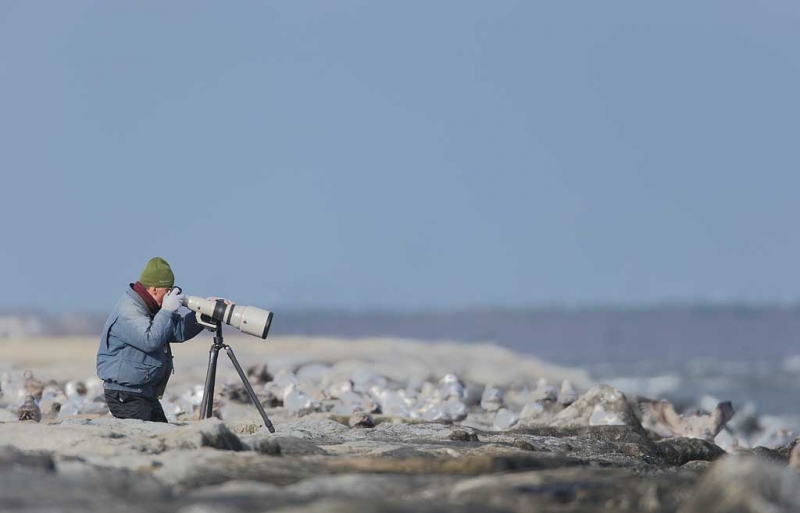
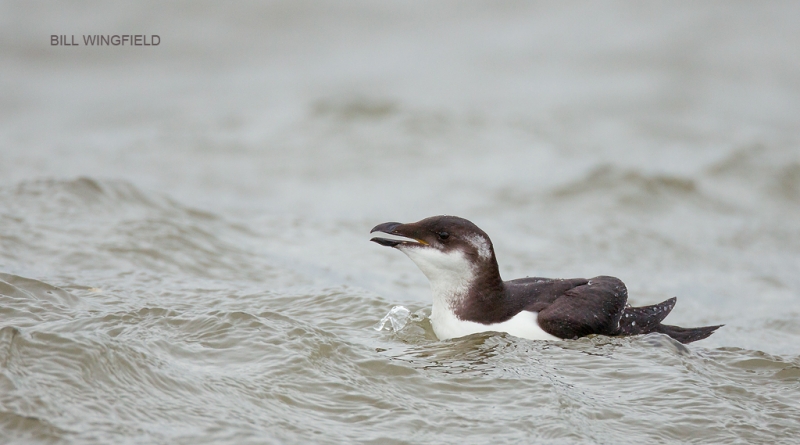
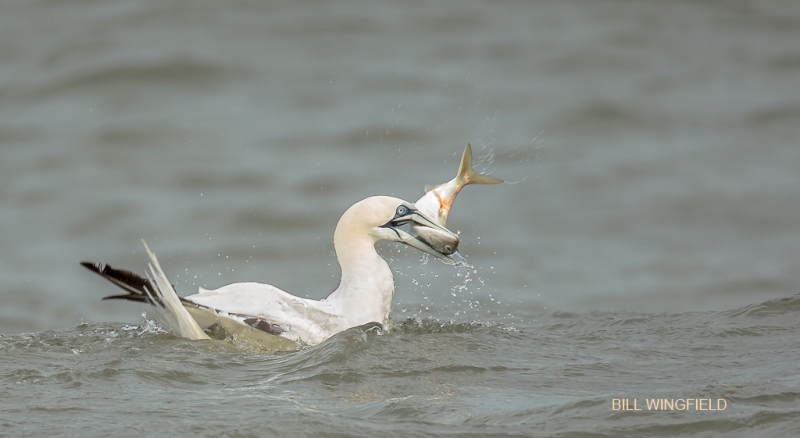
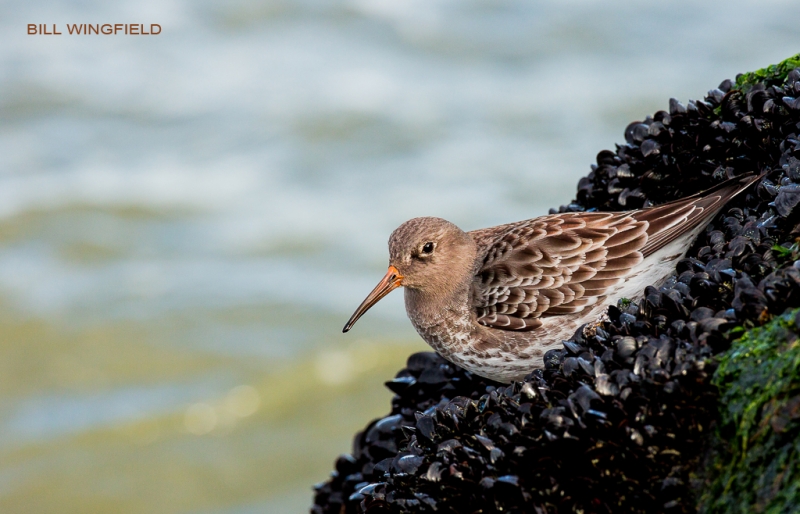
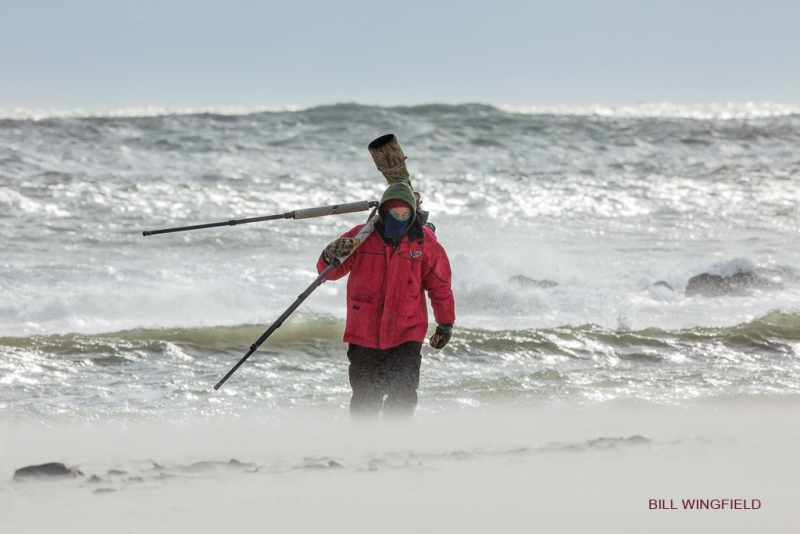
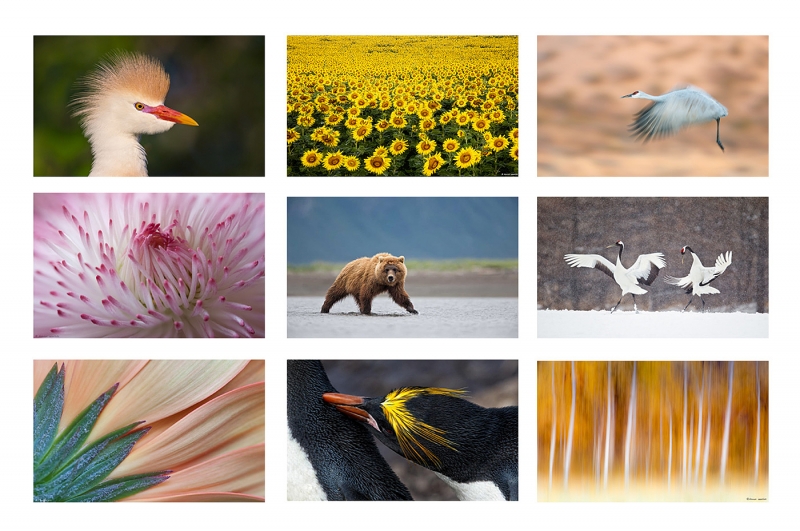













OK, I will play. He seems to be leaning back a bit and his tripod is too. As to hoods, I used to tape my 100-400 lens hood on. Never liked that lens anyway and sold it as soon as I got the new 70-200f2.8 and 2x which has a locking hood and is better in every other way too. As to hand placement, I recall reading your book and the recommendation that the hand be put on top of the big lenses. Is my memory bad or have you changed your mind? Do you now recommend holding the lens underneath like it was not on a tripod or holding the foot? In any event, he got some nice shots! But I am in Florida and it looks cold there!
Yes, see below. It is best to level the tripod platform if possible. Good plan with the 100-400 hood. I did write that but do that only occasionally now, preferring instead to support the lens from below. But I also wrote this in the book, “If you see me doing something other than what I wrote hear do understand that it means that I got smarter.” Or something like that.
See “Advanced Sharpness Techniques” in ABP II.
Barnegat Light is always an interesting and challenging shoot. For anyone who hasn’t been there … in the heat of the moment there are things to consider besides angle and exposure, like not falling in a crack and breaking a leg, or not having a piece of gear get blown into the surf. It’s a great place and always a surprise!
Artie … Elise and I were hoping to come up and shoot today and say hi. Alas she’s down with a cold. Maybe next year.
Hey Marc, It would have been nice to see you guys again. As it turned out, it was my best day ever at the Jetty….
Jim, Re. lens-hoods Please re-read my initial comment. I was referring to the small image advertising Artie’s IPTs to the right of ‘The Rookie’, NOT Bill. Artie obviously got my point.
Artie – I used the word ‘assume’ as I would not dream of attempting to ‘tell’ you what to do!!!
Yes I do have a sense of humour! I owned a 100-400 for many years and never once had it fall off, but then I never sneeze very hard. Even though the front element might be the cheapest part, damage to it still would mean replacing the whole lens. Having bought any expensive Canon lens surely it is just common sense to take the few seconds to put on its lens-hood which, apart from cutting down lens flare in some situations, offers a certain amount of protection to that ‘inexpensive’ front element, particularly in windblown sandy situations. Artie, sorry we seem to be off the Blog subject – I think it is about time you put us out of our misery and informed us of your final suggestion for further improvement. All the Best for 2013.
Well, you know what happens when you assume. Messing up the front element does not mean replacing the whole lens. It is a relatively cheap repair. As I said, if you put the lens hood on the 1-4 it will fall off. I have seen them fall off and into the water and sink and I have seen them fall into a moat full of alligators. So, as I stated clearly, I tell folks not to use them with that lens and I never use one on any intermediate telephoto unless there is a threat of rain. As for flare, I point my shadow at my subjects or nearly so when doing front lit and and when doing backlit I am almost always pointing my lens directly at the sun inc hich case a lens hood will not prevent flare.
As for putting you out of your misery I supplied the answer in my responses to several comments. Thanks for the good 2013 wishes and ditto.
I think what he’s doing “wrong” is not using the back button for focus.
Hard to see that from the photo. And lots of folks like Arash and Denise do just fine with shutter button focus.
Too bad the weather appears uncomfortably cold. I try to avoid those conditions. Since Bill has his shadow directly at the subject, I would suggest he have attempted to move forward and right.
Why would you suggest that?
Closer to subjects that may drift in or fly over the surf, and improve the angle of light.
Bill is taking better pics than the teacher. That’s a no-no. LOL.
In all seriousness, what an opportunity, to be one on one with Artie and Denise. Wow. Wish I could’ve made it, but the nasty four letter word “work” gets in the way all too often.
mark
It was actually 2 on 2.
I’d say he didn’t level his tripod, which means he’ll have crooked horizons if he turns the camera right or left.
You are correct. See my additional comments on the topic elsewhere.
Hi, Artie and Bill. Kudos to Bill for his great shots and you for educating us. I don’t know if Bill is doing anything wrong, and his great images suggest that at worst he wasn’t doing much wrong! But if I were in that situation and intended to be there for a while, I wouldn’t be looking through the camera lens. I’d be standing next to it and looking around for good photo opportunities. But again, as I said, there’s nothing to complain about in those great images.
David. Bill was obviously looking at a bird…. 🙂
So I thought at first, then read your “assuming that he was going to be there for a while.” So are you saying that leveling the tripod head is a luxury if you have the time, but otherwise get the image? That would make sense to me.
That is correct! artie
To answer the question, I believe Bill needs to level his tripod head. Simples! 🙂
PS. I wouldn’t disagree about the suggestion to get lower, but we have no information about would fill the background of his photo if he did so can’t make that judgement. And anyway at 1120mm focal length getting really low isn’t quite so important.
You are correct but I prefer to say that folks should have the tripod platform as close to parallel to the ground (or square to the world) as possible.
Bill was “only” at 800 (not 1120) but your are correct as to the fact that you cannot know if he should have gotten any lower. See my additional comments on that below.
Good job on the leveling comment.
Woops! I read the caption about you capturing it with an 800 + 1.4x and thought that was what Bill was using! Should have read on!
By the way, well done Bill on some good images. 🙂
I agree with Melvin about the reversed lens hood being a problem. Can’t see Bill’s knees and feet so not sure if he is kneeling or standing in a hole in the rocks.
This morning it looks like the link in “to purchase the 600 f/4L IS III (see here for why)” does not work.
Thanks for the question I could easily answer rather than display my lack of knowledge which is what usually happens.
On a second look at the 800 on the tripod I’m not sure the lens hood is reversed, but the lens looks shorter than I thought it would vs my 500.. I think it’s correctly mounted. Notice the screw holding it on, it’s not at the leading edge of the lens.
Agreeing with Melvin is not a good plan. There is no reversed lens hood… I believe that he was standing. Am confused by your comments on the screw….
There is a screw in the lens hood that holds the hood on the front of the super-telephotos. It tightens into a groove at the end of the lens. When the hood is in the normal (shielding the end of the lens) position the hood extends beyond the end of the lens and the screw is “behind” most of the hood. When the hood is reversed it overlaps some of the lens but the screw still tightens into the groove at the end of the lens. There is a black spot near the back edge of the hood that I think is the head of that screw and the hood extends past it.
As you describe it the hood is properly mounted.
I think you’re being too tough on the Northern Gannet photo. That shot’s a potential contest winner. Technical issues aside, it’s interesting and tells a story in a way most other photos posted here don’t. The position of the fish head in particular puts it at the top of the class of birds eating fish photos (though it does remind me of your bear claw and fish eye photograph).
There are only so many perfectly exposed, perfectly focused bird portraits you can look at before you grow jaded. It’s worth learning how to make them; but there’s just not a lot of interest to another perfect photo of a Razorbill swimming or a Purple Sandpiper on the rocks. (I’ve got a few of the latter myself.)
It’s harder to get really good action and behavior shots. The image is only there for a second, and you may only get a chance at such an image every other day, maybe less often. And the easiest shots are all done. Technology has improved to the point where birds in flight and songbird setups don’t amaze the way they used to. But a picture like that Gannet can still stand out and grab the viewer.
As for the gannet image, there were some detail-less WHITEs that I repaired with the Clone Stamp Tool. That is not permitted in most contests….
Getting the right exposure is pretty much a necessity and it is not the difficult. I am confident that Bill already has it nailed.
With the incredible improvements in lens quality and especially, in AF, it is now actually easier top make great action and behavior images.
Don’t get me wrong, I think it’s a great image and I wish that it were mine. artie
I agree with Daniel but,ideally, find a suitable rock to sit on and keep still and get an even lower camera viewpoint. Incidentally, with regard to the nice image, advertising your Instructional Photo Tours, to the right of ‘The Rookie’ – I assume you will be instructing the participants to always use their lenshoods, put on the right way round, to help protect their lens front element? Nice images Bill.
Melvin, It is very likely that if he got even an inch lower that he would have introduced unwanted foreground elements and possibly blocked the view of the bird’s feet.
You wrote, “I assume you will be instructing the participants to always use their lens hoods, put on the right way round, to help protect their lens front element?”
Usually when you assume you make “an ass out of u and me.” In this case, you just made an ass of yourself :). Why? The lens hood of the Geri’s lens, the 100-400 is a piece of junk. It falls off when you sneeze. In addition, I “instruct” folks to use the lens hoods of intermediate lens only when it is raining or there is a good chance of rain. The front element of these lenses is the least expensive part of the whole thing. In the same vein, I advise folks never to use any type of UV filter on the front of these lenses as they slow down AF and degrade image quality.
Is the thing he is doing wrong kneeling and he will be cutting the bloodflow off to his legs? Would it be better if he sat on his bum?
Nope. He is actually standing between the big rocks.
Bill looks like he’s bending forward a bit, which could be a bit of a strain. If it were me, and assuming I were planning to stay awhile, I’d either raise the tripod a few inches and stand straight, or (if practicable considering the jetty’s rocks and the vantage point) lower it and sit down! Nice photos! –Daniel
Not what I was looking for. See additional comments above.